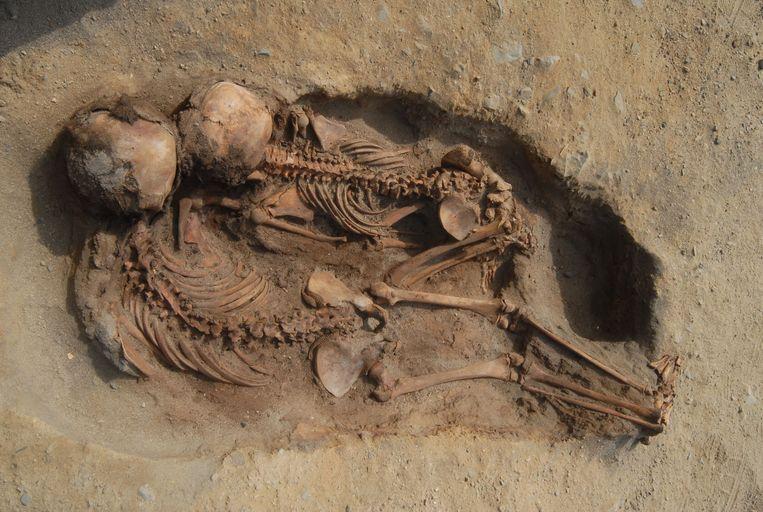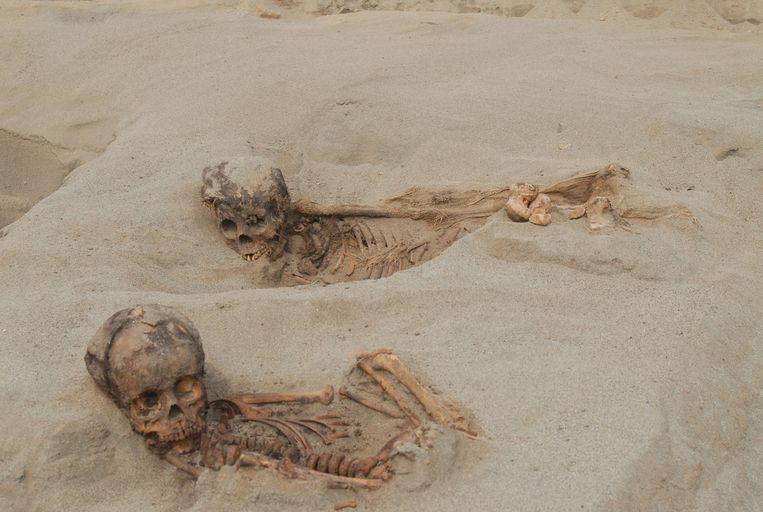Largest child sacrifice from South American history discovered

More than 140 children and two hundred animals were sacrificed around 1450 at once in present-day Peru. The sacrifice was possibly a response to extremely bad weather caused by El Nino. This sacrifice stands as the Largest child sacrifice from South American history.
A find of many hundreds of children’s bones on the north coast of Peru points to large-scale child sacrifice, the largest in South American history ever discovered. Archaeologists excavated remnants of more than 140 children and 200 young camelids, such as lamas, which were sacrificed in the Chimu empire in the mid-15th century. That elongated empire in the Andes was plagued by heavy rains and floods and the sacrifice was possibly an attempt to put an end to it.
According to The New York Times, DNA evidence shows that the victims were both boys and girls, aged between five and 14, and came from across the Chimu state.
In the Andes, animal and human sacrifices have been found previously, including children. But the scale of this child sacrifice is unprecedented.
It happened at a muddy place near the ocean, called Huanchaquito-Las Llamas. In the mud, footprints have been preserved that show that two large groups of children and llamas walked to the sacrificial site, one group from the south and the other from the north.
Archaeologist Gabriel Prieto, of the Nation University of Trujillo, and his colleagues found a cut on the sternums of nearly all the children still possessing the complete bone, suggesting their chests were cut open and hearts ripped out, reports Forbes.
The face of some of the children had been reddened in advance using a paint based on mercury sulfide. Others wore a striking headdress of cotton. Many children were buried in groups of three and often there was an animal next to or on a child.
Excellent bones
The search for the sacrifice began in 2011 after residents had seen bones. Last year the enormous scale of the sacrifice was announced and this week researchers describe their discoveries in detail in the scientific journal Plos One.
One of the results: the sacrificed children came from different parts of what is nowadays Peru. That is evident from their skulls. Part of it was deliberately deformed in life, with the help of bandages and shelves, as was customary in some groups in the Andes. The skull styles of the sacrificed children varied and it can be deduced that the children came from different areas.
The researchers suspect that the sacrifice had to do with the natural phenomenon of El Nino, which once every few years could cause major problems in the Chimu empire at irregular intervals. Because of the warming of water in the Pacific Ocean, the area was confronted with extreme rain showers, floods and failed harvests.
Serious inconvenience
The sacrifice took place on a fresh layer of mud, which had ended up there due to downpours or a flood – possibly a consequence of El Nino. Apparently, the nuisance was so serious that Chimu offered the most important thing they had: indispensable beasts of burden and even children.

Archaeologist and Associate Professor and also Senior Researcher in the School of Archaeology Alexander Geurds was not involved in the research but finds the connection with El Nino plausible. “So many children at once, there was probably an exceptional reason for that. And the consequences of El Nino could be very drastic in that area. This was partly due to the fact that buildings consisted of limestone, which succumbed under the rain. Imagine that you have to build everything up again and again.”
“The sacrifices served to restore the disturbed balance between people and the environment, to stop the problems or to prevent them in the future. It was about negotiations with the environment, for which the Chimu use objects, plants, animals, people and sometimes also children.”




